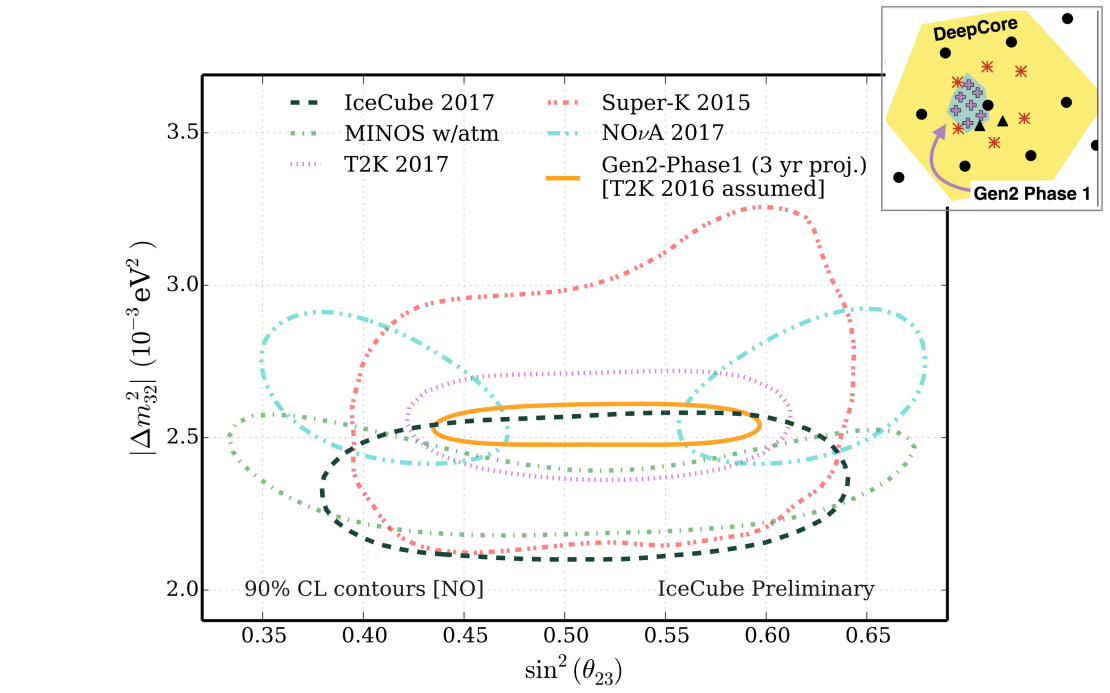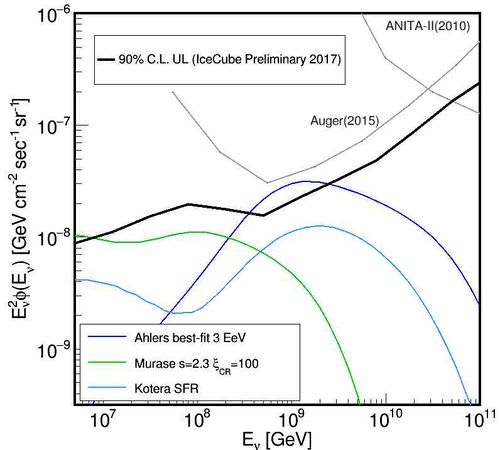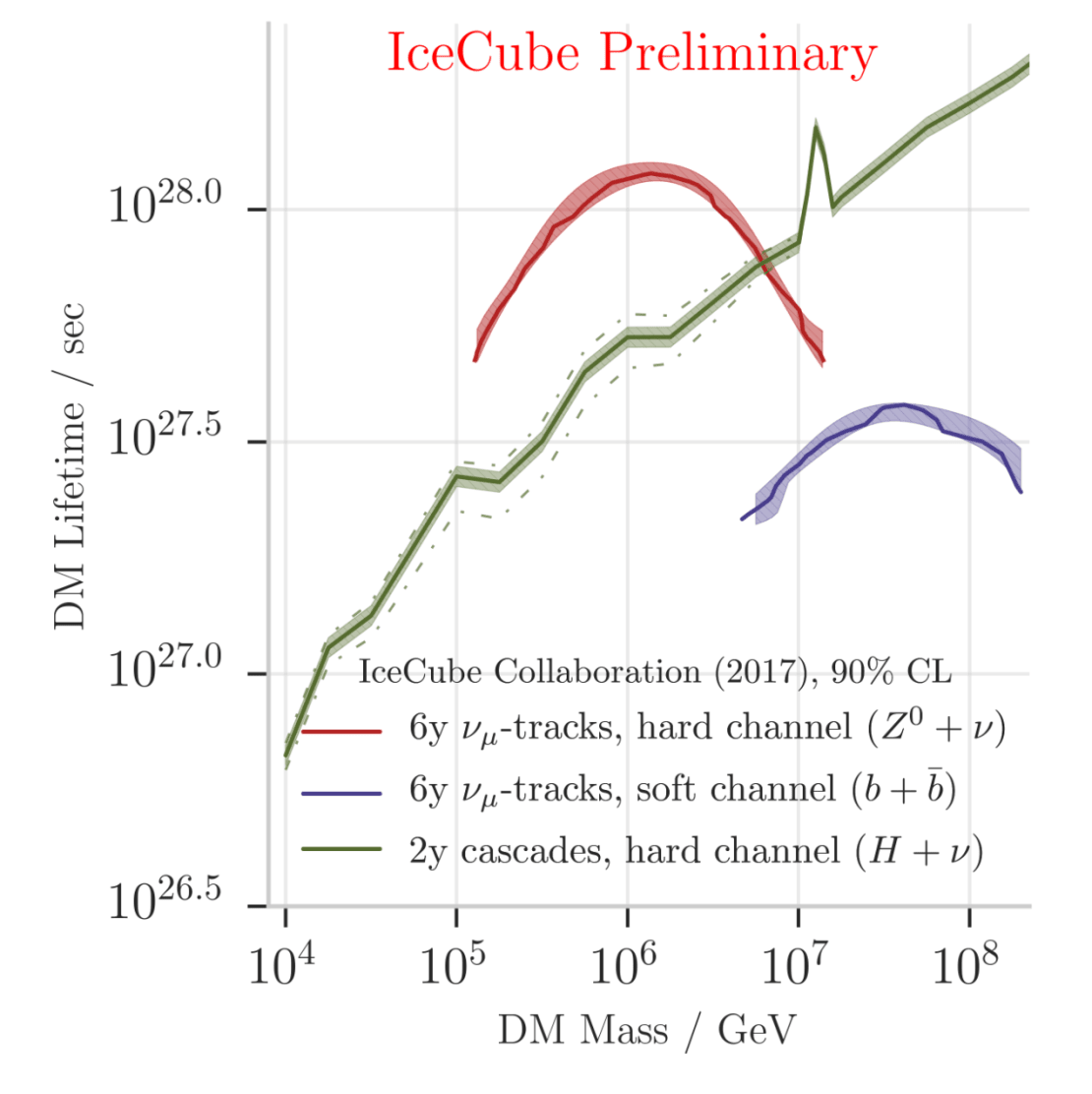The International Cosmic Ray Conference, ICRC 2017, closed yesterday in Busan, Korea, after almost ten days of exciting science on astroparticle physics topics, including several highlighted talks and updates from IceCube and even a few awards to IceCube collaborators.
IceCube collaborators presented more than 20 talks and almost 40 posters. These are a few highlights from IceCube talks:
In a highlight talk on Wednesday, July 19, Jakob van Santen from DESY summarized the most important results from IceCube since the discovery of a flux of astrophysical neutrinos in 2013, including updates on searches for very high energy neutrinos and neutrino oscillation studies. These outstanding results in neutrino astronomy and neutrino physics support the plans for a next-generation neutrino observatory at the South Pole, the so-called IceCube-Gen2. Van Santen also presented current status and future plans for this updated facility.


On July 17, Shigeru Yoshida from Chiba University presented an update to the IceCube searches for cosmogenic neutrinos, which now includes nine years of data. Preliminary results do not report any cosmogenic neutrino candidate, thus adding support to a non-proton-dominated composition of ultra-high-energy cosmic rays, or much weaker than expected cosmological evolution of proton-dominated sources. Either way, these scenarios would produce a cosmogenic neutrino flux much smaller than what current detectors can measure.

On July 19, Joeran Stettner from RWTH Aachen University presented a search for decaying dark matter with masses above 10 TeV: one using muon-neutrino tracks from the Northern Hemisphere in six years of IceCube data and one using cascade events from the full sky using two years of data. No significant signal signature was observed, which provided new limits on the dark matter lifetime for masses above 10 TeV.

On the last day of the conference, July 20, IceCubers Markus Ackermann from DESY and Carsten Rott from Sungkyunkwan University gave two of the topical rapporteur talks. Ackermann summarized the state-of the art on neutrino astronomy, while Rott discussed latest results on dark matter.
Finally, Elisa Resconi, an IceCube collaborator at the Technical University of Munich (TUM), gave an invited talk on high-energy multimessenger astronomy. In her talk, she summarized the latest results from searches for sources of neutrinos and gamma rays, or neutrinos and other electromagnetic counterparts. As she pointed out, we are just in the infancy of multimessenger astronomy, but it’s also a sweet moment, when data is more available than ever, including several systems of online alerts.
Also related to this topic, Erik Blaufuss presented a poster about IceCube real-time neutrino alerts, which will boost searches for electromagnetic counterparts in conjunction with neutrino emission.
But ICRC2017 has also been a conference to celebrate the successful careers of two IceCube collaborators. Christian Spiering from DESY was awarded the O’Ceallaigh Medal for his “outstanding contributions to cosmic ray physics and to the newly emerging field of neutrino astronomy in particular,” and Subir Sarkar, a professor of physics at both the universities of Oxford and Copenhagen, got the Homi Bhabha Award for his “distinguished contributions in the field of high energy cosmic ray physics and astroparticle physics over an extended academic career.” The award ceremony was held during the opening session of the conference, on July 13, 2017.
ICRC is organized biennially by the Commission on Astroparticle Physics (C4), established in 1947, of the International Union of Pure and Applied Physics (IUPAP). The next conference, ICRC2019, will be held in the US for the first time, hosted by our collaborators at the University of Wisconsin–Madison.